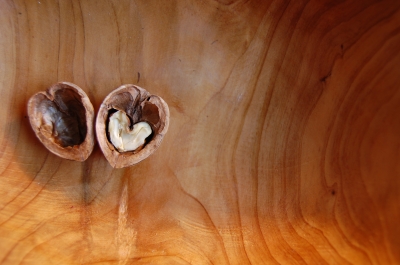Vote for me!
Would you do me a favor?
The company I license with to provide weight loss programs entered a contest! Please click the link below to vote for us. Look for the “Vote for Me” button beneath the Real Living Nutrition Services logo.
http://www.startupnation.com/homebased100/contestant/1608/index.php
Thank you!
Lisa Nelson, RD, LN
Your Checklist to Lower Cholesterol
Here’s a checklist of the top 8 things you must do if you want to successfully lower your cholesterol and keep it low.
Know your numbers
Have you had a lipid profile? Do you understand the numbers? If you are going to successfully lower cholesterol you need to know your numbers and what they mean. The most effective way to raise HDL is not necessarily the best way to lower LDL.
Evaluate your lifestyle
There are risk factors for high cholesterol that you can not control, such as age, gender, and family history, but there are factors you can control. For example, you can reduce risk by not smoking, increasing your activity, and losing extra weight.
Balance your fats
Reduce unhealthy saturated fats in your diet and replace them with heart healthy unsaturated fats. Total fat intake should be 30% or less of your total daily calories. Out of this 30%, saturated fat should be limited to 7%.
Be active
Physical activity lowers triglycerides and raises HDL (good) cholesterol. Shoot for 30 minutes 5 or more days a week. If you are not currently active, check with your MD before beginning an activity program.
Eliminate trans fats
You need to be food label savvy and watch out for trans fats. Trans fats raise LDL (bad) cholesterol, lower HDL (good) cholesterol, and raise triglycerides. Limit trans fats to 1% or less of your daily caloric intake.
Understand triglycerides
Triglycerides are impacted the most by your simple sugar and alcohol intake. If you are struggling with high triglycerides, you need to use a different strategy to get your cholesterol under control.
Increase dietary fiber
A high fiber diet is necessary for heart health. You need 25-35 grams of dietary fiber daily, especially soluble fiber. For every 1-2 grams of daily soluble fiber intake, LDL (bad) cholesterol is lowered 1%.
Add omega 3 fatty acids
For heart health and lower cholesterol, you want to improve the ratio of omega 3 to omega 6 fatty acids. Omega 3 fatty acids are involved in the regulation of heart rate, blood pressure, and blood clotting.
Receive a step by step plan to promote heart health with a Mini Diet Makeover. As a special New Year’s bonus you’ll recieve a complimentary copy of the Calorie Counter for Dummies. Learn more here – https://www.lisanelsonrd.com/minidietmakeover.html
All the best,
Lisa Nelson RD
How to Lower Cholesterol in 8 Simple Steps
Vytorin to lower cholesterol
A reader from The Heart of Health is treating high cholesterol with Vytorin. The medication Vytorin is a combination of the statin drug Zocor and the cholesterol lowering drug Zetia. The two drugs differ in that statins function mainly in the liver to reduce production of cholesterol, while Zetia works in the digestive tract to block the absorption of cholesterol from food.
Vytorin is in the press right now, because of a possible link to increased cancer risk. Studies including 20,000 patients compared cancer in those treated with Vytorin (313) to those taking a Zocor/statin drug (326). Actual cancer deaths were greater in those taking Vytorin (97) versus Zocor (72). From my perspective, that is not a significant difference; however, there are experts that agree with me and experts that disagree.
Anyway, The Heart of Health reader requested my thoughts.
First, absolutely discuss with your MD the best treatment for you. I would discuss the possibility of a statin lowering drug with proven effectiveness/safety as an alternative until the controversy regarding Vytorin is settled. Also, there is debate surrounding the effectiveness of Zetia at preventing heart disease.
Of course, I do not know your personal situation and if you have tried a statin with poor results in the past.
Anytime you have to take a medication, there is the risk of side effects. Many times it’s simply a matter of weighing the pros and cons and deciding how much risk you’re willing to take.
Of course, I promote making lifestyle and diet changes to lower cholesterol to eliminate the need for medications or at least reduce the amount of medication needed to treat your condition.
If you are not a current subscriber to The Heart of Health, you’ll receive a subscriber exclusive report: “Stop Wasting Money – Take Control of Your Health” and regular heart health and weight loss tips once you sign-up.
All the best,
Lisa Nelson, RD, LN
eNutritionServices
Preserve potassium when preparing potatoes
If you’re making mashed potatoes or many other potato dishes, what do you do? Cube the potatoes and throw them in a pot of water to boil? If you want to hang on to the potassium potatoes offer, it’s best to boil the potato whole – skin and all. When potatoes are cubed or shredded then boiled, studies show a 75% loss of potassium.
Also, good news if you like to soak your potatoes in water overnight. Soaking potatoes does not result in a significant loss of nutrients to the water they’re soaked in.
For regular heart health and weight loss tips from dietitian Lisa Nelson, be sure to sign up for The Heart of Health ezine.
Omega 3’s and Walnuts

Sometimes people wonder about the health benefits of the black walnut versus the more common English walnut, so I’m going to provide you some quick info.
The English walnut contains more omega 3 fatty acids per ounce than the black walnut (2.6 grams versus .57 grams). To promote heart health, increasing your omega 3 fatty intake is a good step to take, so opt for the English walnut (which is easier to find anyway).
Another component to keep in mind:
The type of omega 3 fatty acid contained in walnuts is ALA (alpha linolenic acid). The conversion of ALA to EPA and DHA (the two types of omega 3 fatty acids linked to health benefits) is inefficient.
The Heart of Health
Be sure to sign up for The Heart of Health to receive regular heart health and weight loss tips from dietitian Lisa Nelson!
Image courtesy of Aleksa D / FreeDigitalPhotos.net
Wear a pedometer for heart health and weight loss!
Wearing a pedometer is a simple way to track your activity.
First, wear a pedometer everyday for a week and write your daily steps on a calendar. By the weeks end, you’ll have a idea of how much you move each day.
Next, find ways to increase your steps, such as an extra walk, taking the stairs versus the elevator, parking further from the store, etc.
Make your final goal 10,000 steps (~5 miles) each day!
Lisa Nelson, RD, LN
The Heart of Health



